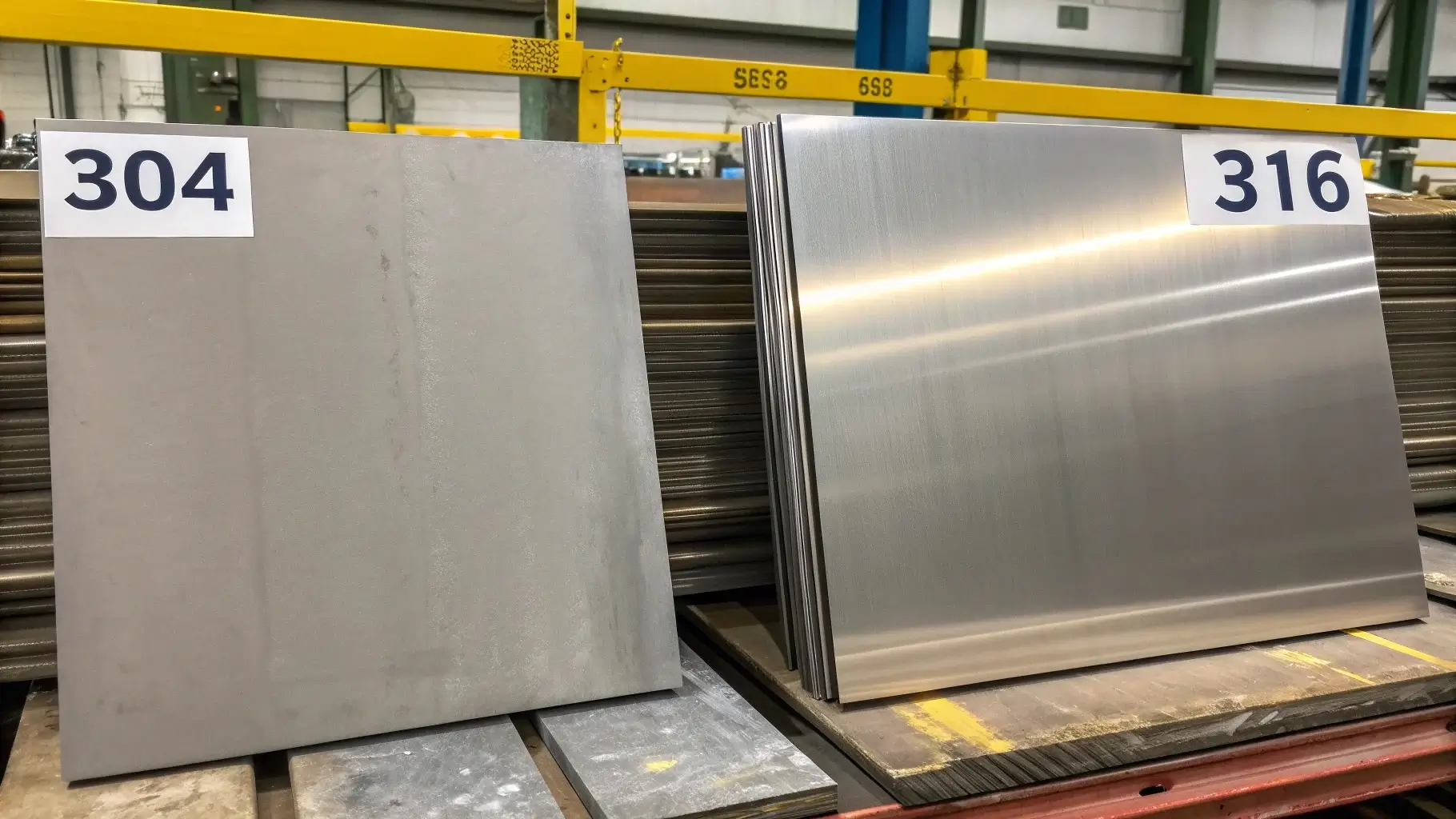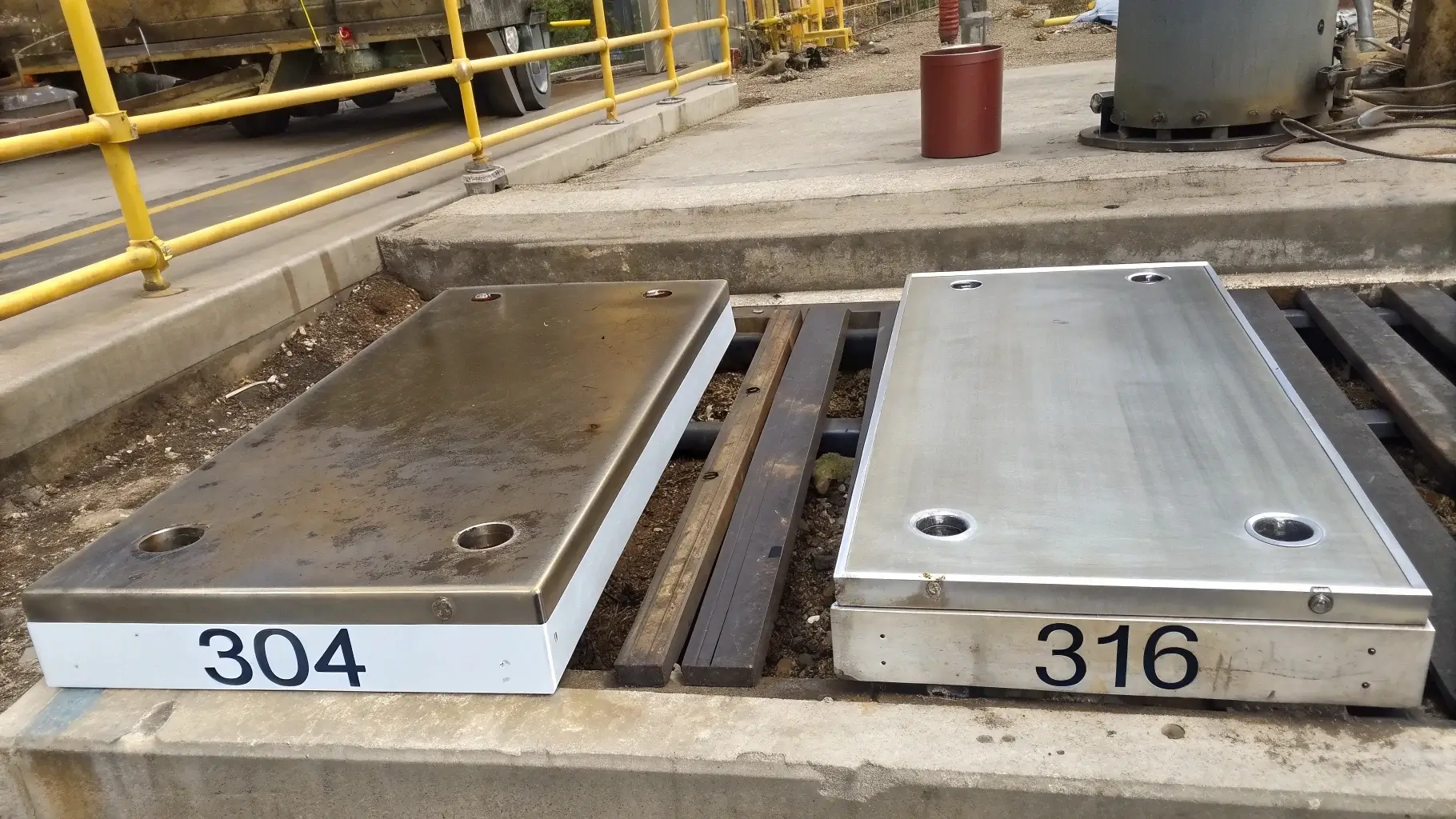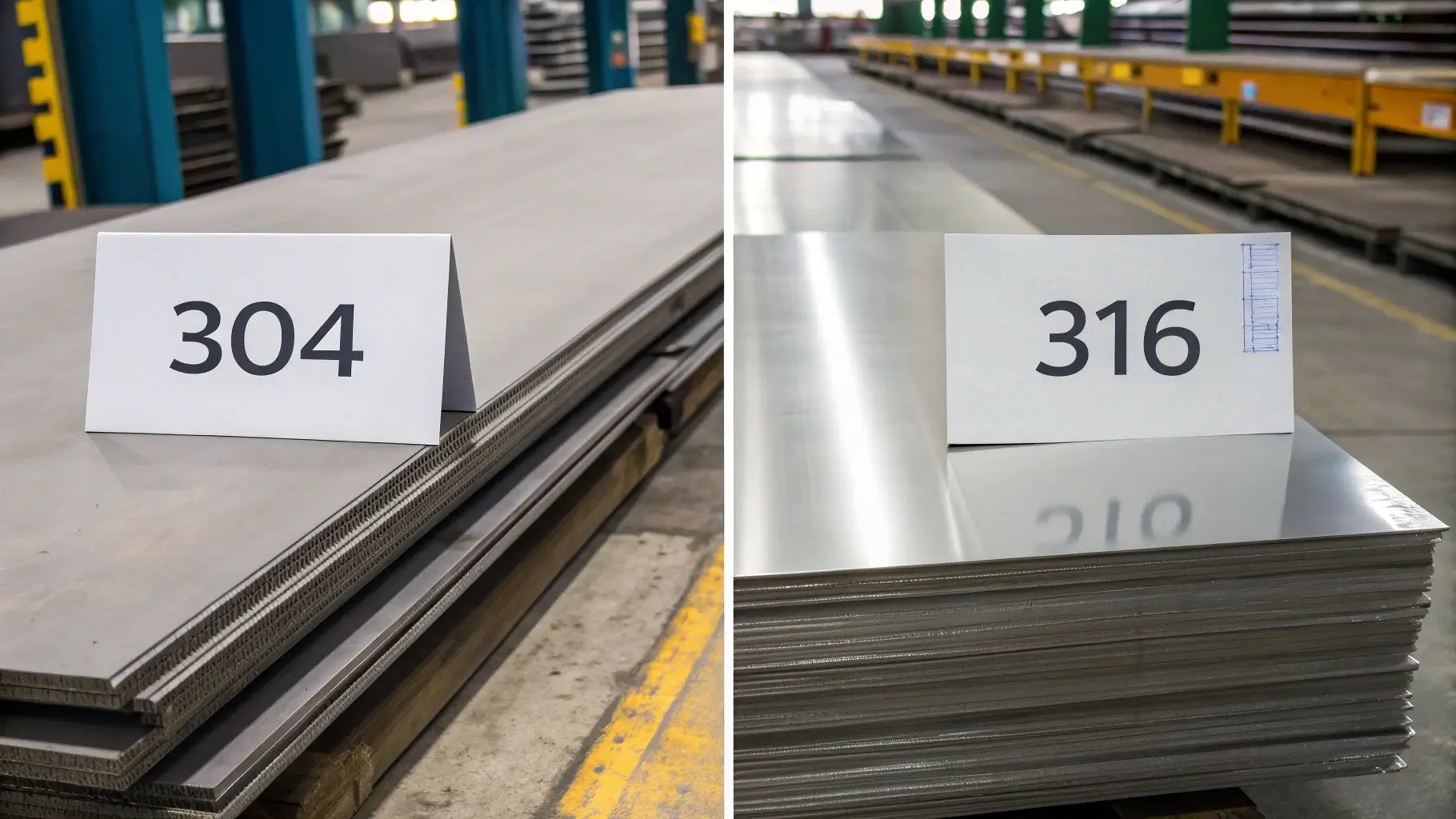
304 and 316 stainless steel are widely used in various industries, but they differ in composition, corrosion resistance, and applications. Choosing the right type depends on environmental conditions and cost considerations.
304 stainless steel is cost-effective and versatile, while 316 stainless steel provides superior corrosion resistance, particularly in harsh environments with exposure to chlorides and acids.
Understanding their differences helps businesses and consumers select the best material for their specific needs.
What Are the Differences in the Chemical Composition of 304 and 316 Stainless Steel?
The primary difference between 304 and 316 stainless steel lies in their chemical composition, which affects their properties.
304 stainless steel contains 18% chromium and 8% nickel, while 316 stainless steel has 16% chromium, 10% nickel, and 2% molybdenum, making it more resistant to corrosion (composition details)1.

Key Chemical Differences
| Feature | 304 Stainless Steel | 316 Stainless Steel |
|---|---|---|
| Chromium (Cr) | 18% | 16% |
| Nickel (Ni) | 8% | 10% |
| Molybdenum (Mo) | None | 2% |
The addition of molybdenum in 316 stainless steel enhances its resistance to chlorides and acidic environments (corrosion insights)2.
Here is also a video that shows more details about the difference between 304 stainless steel and 316 stainless steel:
How Do 304 and 316 Stainless Steel Compare in Corrosion Resistance?
Corrosion resistance is a key differentiator between 304 and 316 stainless steel, especially in harsh environments.
304 stainless steel is resistant to most atmospheric corrosion but is susceptible to chloride-induced pitting, whereas 316 stainless steel offers superior corrosion resistance due to its molybdenum content (corrosion comparison)3.

Corrosion Resistance in Different Environments
- 304 Stainless Steel: Suitable for general environments but may corrode in saltwater or acidic conditions.
- 316 Stainless Steel: Resists saltwater corrosion, making it ideal for marine and chemical applications.
What Are the Mechanical Properties and Applications of 304 and 316 Stainless Steel?
Both 304 and 316 stainless steel offer excellent mechanical properties, but 316 has slightly higher strength and hardness.
316 stainless steel has greater tensile strength and durability, making it better for heavy-duty applications, while 304 stainless steel is more flexible and easier to fabricate (mechanical properties guide)4.
Mechanical Properties Comparison
| Property | 304 Stainless Steel | 316 Stainless Steel |
|---|---|---|
| Tensile Strength | 515 MPa | 579 MPa |
| Hardness (Brinell) | 201 | 217 |
| Flexibility | Higher | Lower |
Common Applications
- 304 Stainless Steel: Kitchen appliances, food processing equipment, architectural trim.
- 316 Stainless Steel: Marine hardware, chemical processing, medical implants.
How Do 304 and 316 Stainless Steel Differ in Cost?
Cost is a major factor when choosing between 304 and 316 stainless steel.
316 stainless steel is more expensive than 304 due to its higher nickel and molybdenum content, increasing production costs (price factors)5.

Price Comparison
| Size | 304 Stainless Steel Price | 316 Stainless Steel Price |
|---|---|---|
| 6”x6”x1/4” Sheet | $28.55 | $46.72 |
What Are the Environmental and Industrial Applications of 304 and 316 Stainless Steel?
Both grades of stainless steel are widely used in various industries, but their environmental resistance determines their best use cases.

304 stainless steel is common in general-purpose applications, while 316 stainless steel is used in environments requiring extreme corrosion resistance (application guide)6.
Industry-Specific Applications
| Industry | Preferred Stainless Steel | Reason |
|---|---|---|
| Food & Beverage | 304 Stainless Steel | Cost-effective, food-safe |
| Marine & Offshore | 316 Stainless Steel | Saltwater resistance |
| Medical Equipment | 316 Stainless Steel | Biocompatibility |
Conclusion: Choosing Between 304 and 316 Stainless Steel
The choice between 304 and 316 stainless steel depends on the application’s environmental conditions, mechanical requirements, and budget.
- Use 304 stainless steel if cost is a primary concern and exposure to harsh chemicals is minimal.
- Use 316 stainless steel if superior corrosion resistance is needed, especially in marine or chemical settings.
Making the right choice ensures long-lasting performance and cost efficiency (expert selection guide)7.
Answers to People Also Ask Questions
1. What Is the Difference in Corrosion Resistance Between 304 and 316 Stainless Steel?
316 stainless steel offers superior corrosion resistance compared to 304 stainless steel, particularly against chlorides and acids, due to its molybdenum content.
2. Which Stainless Steel Is More Expensive, 304 or 316?
316 stainless steel is more expensive than 304 stainless steel, primarily due to its higher nickel content and the addition of molybdenum.
3. What Are the Typical Applications for 304 and 316 Stainless Steel?
304 stainless steel is commonly used in kitchen appliances, architectural trim, and food processing equipment. 316 stainless steel is used in marine environments, medical equipment, and chemical processing.
4. How Do the Mechanical Properties of 304 and 316 Stainless Steel Compare?
316 stainless steel has higher tensile strength and hardness compared to 304 stainless steel. However, 304 stainless steel is more flexible due to its lower modulus of elasticity.
5. Is 316 Stainless Steel Better for High-Temperature Applications?
Yes, 316 stainless steel retains its strength and corrosion resistance at elevated temperatures better than 304 stainless steel, making it more suitable for high-temperature applications.

